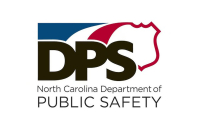Casino announces expansion: $250 million project will add fourth hotel tower, event space

Harrah’s Cherokee Casino Resort is stepping into its 20th year of operation with plans for a massive expansion that will add 600-800 hotel rooms, a parking deck and a 100,000-square-foot event center to the existing 1,900,000-square-foot complex.
The Cherokee Tribal Council approved the project last week, authorizing the Tribal Casino Gaming Enterprise to borrow up to $250 million to complete it, with the casino’s director of planning and analysis Jeremiah Wiggins telling council the project is expected to run in the $150 to $200 million range, with the $250 million figure possible as a contingency.
“I’m extremely pleased that we were able to pass this through council and continue to grow our enterprise,” said Principal Chief Patrick Lambert in a press release from the casino. “The convention center and hotel is just a first step in completing our vision of making Cherokee a great place to visit, benefiting not only our casino but our tribal businesses as well.”
The existing facility, which includes 1,100 hotel rooms and a 16,000-square-foot event center — in addition to the extensive gaming-related offerings, restaurants and retail — isn’t big enough to meet the constantly growing demand, according to Leeann Bridges, Harrah’s regional vice president for marketing. Lack of capacity forces Harrah’s to turn away business on a regular basis, she said, even with the contracts the casino keeps with surrounding hotels to accept overflow business. Each year, these contracts result in casino guests spending 80,000 hotel nights at accommodations outside of Harrah’s.
However, Harrah’s still denies about 120,000 hotel reservations per year for lack of space, Bridges said. And convention bookings, which have risen by double-digit percentages since 2013, are turned away as often as they are made.
“This new facility that we are talking about — convention space, hotel rooms — is really going to allow us to blow up that convention business even more,” Bridges said.
Related Items
According to Wiggins, the new hotel tower, which will be Harrah’s fourth, is expected to boost revenue by $4 to $6 million annually.
The planning is still preliminary. No architect has yet been engaged, and the location of the new addition has not been determined. The project is expected to be complete near the beginning of 2020 — actual construction will take about two years, and before that starts Harrah’s will have to go through the design phase and bid the project to a contractor.
“If we could have a shovel in the ground by year’s end, I think we would be very pleased with that,” Bridges said.
Plans will focus on creating a space that’s multifunctional enough to accommodate the needs of various groups and equipped with state-of-the-art audio and visual equipment. The event center will likely be a two-story affair, TCGE Chairman Jim Owle told Tribal Council last week, capable of holding multiple conventions simultaneously. It’s even possible that one of the floors could be capable of hosting sporting events, like basketball, Owle said.
The expansion will create 200 to 250 new positions, Bridges said.
“Those will be positions at all different levels,” she said. “We’re talking housekeepers, quality assurance folks who go in and inspect the rooms, management, front desk supervisors.”
Discussion in council
Tribal Council approved the project overwhelmingly but not unanimously. Of the 11 councilmembers present, eight voted in favor of allowing the TCGE to borrow the money, while three voted against it.
Councilmember Adam Wachacha, of Snowbird, supplied the strongest opposition to the plan, taking issue with the large amount of debt the tribe would incur and questioning whether, if the tribe were to spend $250 million, gaming was the right place to put it.
“After 30 years of paying this back at only $20 million a year, we’re going to be paying over a billion dollars for these two projects alone,” he said. “We seem to be digging ourselves more in debt.”
The tribe currently holds $518.7 million in debt on the casino in Cherokee, with an additional $90 million on the recently completed Harrah’s Cherokee Valley River Casino in Murphy. The original structure was built in 1999, with new hotel towers added in 2002 and 2005, a $254 million expansion in 2006 and a $633 million expansion completed in 2012. In 2015, the tribe completed its next big project, Valley River Casino, a $110 million endeavor.
Wachacha asked whether it was a good idea to approve yet another expensive project with so much debt in hand already. Besides, he said, the tribe has long discussed the need to diversify and become less dependent on gaming. If another casino should open in the region and intercept Harrah’s customers coming from Atlanta and Chattanooga, the thought goes, the tribe’s brisk casino business could crash as quickly as it soared. Wachacha advocated that dollars instead be spent on projects to diversify the economy or to provide services such as housing for tribal members.
“At this time I honestly cannot agree moving forward unless we have a better plan,” Wachacha said.
However, Harrah’s regional vice president of finance, Adele Jacobs-Madden, contended that the numbers make a strong case for continued expansion.
“Since the casino’s been open, and if you want to add Murphy, it’s about $1.1 billion in assets we have on the books,” she said. “At the end of this year, $4 billion in tribal distributions will have gone back to the tribe as a result of the casino. And that’s a pretty good return.”
Of the casino’s profits, half goes to the Eastern Band of Cherokee Indians and half is paid out in bi-yearly per capita payments to tribal members. The December per capita payment was the largest ever, with every enrolled member receiving $6,189 — the amount went down to $5,261 after taxes.
According to Bridges, the new casino at Murphy played a significant role in the record-breaking per capita payment. It stands to reason that the casino expansion would further boost per capita payments, though it’s hard to say by how much
Ultimately, only Councilmember Bo Crowe, of Wolfetown, and Vice Chairman Brandon Jones, of Snowbird, joined Wachacha in voting against the expansion. The remaining eight councilmembers voted in favor, with Councilmember Teresa McCoy, of Big Cove, absent from the meeting.
More projects in the works
While not a shovelful of earth is likely to be turned in the casino expansion until 2017 is over with, work is already underway on another project — a 24-lane bowling alley slated to open this fall.
The $13 million, two-story facility will be accessible from the first-floor gaming area near the Essence Lounge and from the second-floor event center.
“It’s really going to be fun and lively and just a lot of different things going on with it,” Bridges said. “We know that our tribal members are very excited over that.”
Costs for that project are split down the middle between the TCGE and the tribal government, the idea being that the facility will serve as a recreational amenity for locals as well as a draw for casino visitors. In addition to bowling lanes, the addition will include a bar, an arcade and an entertainment stage.
And even as it plugs along with bowling alley construction and sets its eyes on completing the massive hotel and event addition, Harrah’s is evaluating future needs for the new Valley River Casino in Murphy, now just over one year old.
“We knew from day one that we needed a sit-down restaurant, and our guests quickly told us that they wanted a sit-down restaurant, and we’re looking at starting on that project at some point during this year,” Bridges said.
The specifics have not yet been determined, but the goal is to get a moderately priced restaurant that serves three meals a day and includes a bar with a small entertainment stage. The project will be a significant addition to Valley River amenities — currently, a food court provides the only food service at the facility, and there is no stage area.
“We do not believe in being idle around here, that’s for sure,” Bridges said. “If we do not have a shovel in the ground somewhere, we don’t know what to do with ourselves.”
First-year visitation low at Murphy casino
When the Valley River Casino opened in September 2015, Harrah’s had expected it to serve about 1.5 million people each year. The property in Murphy, the thought went, would be a gaming-centric facility that would allow clients living in Atlanta and northern Georgia a shorter drive to gamble in between longer trips to the flagship facility in Cherokee. From Atlanta, Murphy is about an hour closer than Cherokee.
However, visitation in the first year was a bit lower than anticipated, around 1.1 million. When asked if the demographics of visitors over that first year fit what Harrah’s had expected, Bridges said that “it really, really didn’t.”
“Our VIPs, they tried Murphy, they told us, ‘The gaming products, the food court, that’s great but we really prefer the amenities that are in Cherokee,’” Bridges said. “We continued to see that higher-end play continue to come to Cherokee with some visits to Valley River, so that was a surprise for us.”
People who frequented Valley River tended to be more local, people who are strong players but not high-end VIPs. According to Bridges, that’s a good thing for Harrah’s.
“For so many years we’ve been VIP-driven here in Cherokee, but now we’re able to look at these other segments of guests that have been underserved,” she said.
With a better handle on the demographics of Valley River guests and what’s motivating them to come, Bridges said she expects visitation to rise to the originally projected 1.5 million mark pretty quickly as the casino adjusts its marketing strategy. Plans to add a full-service restaurant with a bar and entertainment stage to the facility, which currently has no sit-down restaurant, are also likely to boost the numbers.









